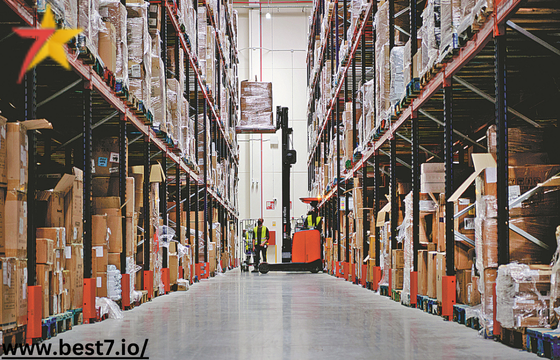
The global retail landscape has undergone a dramatic transformation courtesy of the explosive rise of e-commerce. Even though the ease and access of online shopping are driving billions of people to adopt this way of purchasing, more and more attention is paid to its environmental impact. The overall environmental impact of e-commerce is likely to continue increasing in the next few years, thereby posing valid questions about sustainability when it comes to buying online.
DEMAND FORECAST: But moving commerce into the digital realm has its own problems, such as carbon emissions related to logistics and a rising tide of packaging waste resulting from deliveries. Although progress has been made towards creating more environmentally friendly e-commerce experiences, there is still significantly more work to be done to help offset the environmental impact these practices have on our environment. In this blog post, we will discuss these challenges in detail and touch on where we see ourselves handling these points better in the future based on the studies done before.
1. E-Commerce Sustainability: Shipping
As the global online retail market grows, so should the e-commerce carbon footprint. E-commerce will be a significant contributor to carbon dioxide emissions from shipping and logistics when commerce through the Internet results in total sales of $7.4 trillion by 2025.
At the moment, emissions from e-commerce are estimated to account for about 2% of global emissions, and if action is not taken, this figure is projected to increase. The fast delivery service fad is enabling shipping emissions from e-commerce and releasing tons of harmful greenhouse gases.
Sustainable logistics strategies seem to be picking up, as more e-commerce platforms are striving to cut emissions by investing in renewable energy sources. To add more, Amazon and other leading players in e-commerce are in the transforming phase to make their logistics green; this is clear from a case study on Amazon.
Amazon pledged to reach net-zero carbon emissions by 2040 and stated orders of more than 100,000 electric delivery vans last year. That should save 4 million tons of CO2 emissions across all these light vehicles annually. A largely electric delivery fleet and more renewable energy will reduce shipping emissions by nearly 30% by 2030, according to the forecast.
The establishment of green logistics e-commerce strategies will be pivotal in addressing the emission burden due to e-marketing. Renewable energy will be 40% of that used in warehousing and distribution centers within the next decade. Meanwhile, the creation of zero-carbon shipping processes, which involve electric and hydrogen delivery vehicles, is part of efforts that could help reduce the emissions from online shopping logistics.
2. E-commerce Packaging Waste: Problems and Sustainable Solutions
Shipping waste from e-commerce orders is among the most visible environmental crises. Last year alone, packaging waste from online retail totaled 4.8 million tons (some prognosticators think this figure could swell to 6.5 million tons by 2025).
The customer demand for fast and convenient deliveries has led to a surge in the use of single-use packaging materials, which also contributes significantly to global waste management challenges. The environmental impacts of e-commerce packaging waste can be further exacerbated by overpackaging, in which companies use too many materials to wrap their products for a safe delivery process.
The battle to cut waste in e-commerce is on, and sustainable packaging solutions are winning. For instance, companies including IKEA have been swapping plastic packaging for paper-based materials. Stretch goal: By 2025, IKEA aims to eliminate all single-use and virgin plastic packaging in its e-commerce deliveries, potentially 200,000 tons annually.
In a step in the right direction, Amazon and other online retail players have started testing reusable packaging, using which consumers can return packages for re-use during their next delivery.
It seems only a matter of time before sustainable packaging solutions become the norm afforded to e-commerce retailers in order for them to maintain competitiveness and remain loyal to their aspirations. It is expected that half of e-commerce packaging material can be recycled-based or biodegradable by 2030.
Finally, with package innovations like foldable or multi-functional packaging, waste is limited as well. This will also elicit the use of eco-friendly e-commerce practices, which aim to reduce the overuse of plastic and other non-biodegradable materials used for packaging and pollution control.
3. Future Trends and Projections Of Consumer Behavior In E-Commerce Sustainability
Sustainably driven consumer behavior is changing storefronts and e-commerce forever. Studies show that 70% of online shoppers prefer to purchase from sustainable brands (source). Over time, companies will have to implement solutions to account for a greener form of online retail due to the increasing amount of consumer consciousness around the environmental effect of e-commerce.
In fact, more than half of global consumers (47%) are expected to participate in environmentally conscious online shopping by 2030, making their choices based in part on brand eco-initiatives.
The amount of e-commerce will outweigh brick-and-mortar stores, with a major change being the type of digital shopping experiences people wish to tackle that resonate with sustainability values. An emerging trend in e-commerce that already shows this change is the increase of second-hand platforms and rental services, enabling a circular economy.
Thread Up and Rent the Runway are likely to increase their share of a growing eco-friendly retail sector. Through 2030, the circular economy and e-commerce are anticipated to capture a ten percent share of the global online retail market, thus reducing demand for new products and growing related waste and emissions.
This will additionally result in consumer demands for transparent communication in environmental analysis e-commerce and thus a significant market penetration of labeling systems that inform customers about the carbon footprint as well as sustainability credentials related to their purchase. This change is expected to be assisted with the help of blockchain technology, allowing consumers to see the environmental impact of their purchases in real-time.
Brands that do not clean up their act risk alienating the growing number of green-minded consumers who are expected to gravitate towards companies that truly show they care about lowering the environmental impact of their operations, warned fashion-proofing agency Right project this week.
4. Strategic Sustainability In E-Commerce: How To Reduce The Ecological Footprint Of Online Retail?
To counteract the environmental costs of e-commerce, companies will have to do more in terms of sustainability efforts. These are the seven spots where e-commerce businesses can reduce their impact on the environment:
1. Carbon-Neutral Shipping: One of the highlights for the e-commerce future will be carbon-neutral shipping solutions. Electric delivery fleets and carbon offset programs are going to get a major boost from corporations. By 2028, 35% of the entire global e-commerce delivery will be carbon neutral.
2. Optimizing Last-Mile Delivery: E-commerce generates higher levels of carbon emissions due in part to last-mile delivery. Companies will be able to leverage AI and data analytics in order to minimize their delivery routes, which can lower fuel consumption with up to 25% of the CO2 emissions.
3. Embedded Renewable Energy on Operations: Warehousing and Distribution Centers powered by renewable sources are becoming more prevalent. Worldwide, half of these warehouses will run on solar or wind energy by 2030.
4. Introduction of Sustainable Packaging Solutions: E-commerce companies will have to introduce sustainable packaging solutions for product delivery. In fact, recyclable or biodegradable packaging is forecasted to account for 70% of all online retail packaging by 2027.
5. Incentivizing Eco-Friendly Consumer Behaviors: Online retailers will provide incentives to get consumers online to pick slower, more sustainable delivery options. They predict this change could cut shipping emissions 15% over the next five years.
6. Circular Economy Initiatives Investments: Growing second-hand platforms and product rental services will drive the circular economy in e-commerce. Online shopping waste outputs reduced 30%, all from the circular economy.
7. When the problem of packaging waste grows, e-commerce companies will likely have to address it with a growing waste management system. Updating recycling plants and collaborating with waste management companies can minimize the quantity of packaging that ends up in landfills.
The strides made by these sustainability practices, in turn, will serve to lessen the environmental footprint of e-commerce. Those companies that prioritize green logistics, eco-friendly packaging, and renewable energy will set themselves aside as leaders when it comes to transitioning the industry towards being sustainable. That is, provided these strategies are widely adopted—iin fact, by 2035 the global e-commerce sector is expected to reduce its carbon footprint by around 20%, assuming similar levels of uptake.
With consumers, governments, and environmental organizations all ready and willing to penalize companies who are not operating in a sustainable manner, the move towards cleaner e-commerce is not just a business necessity—it is now an ethical one as well.
While there is no simple solution, by realizing some of the eco-friendly e-commerce solutions and updating with current advancements in technology, the industry as a whole can take large leaps toward reducing its environmental footprint while ensuring the demands of an ever-growing population of online shoppers are still being addressed.












